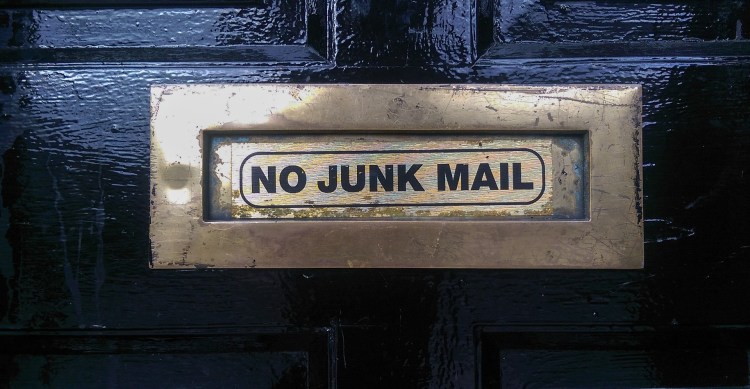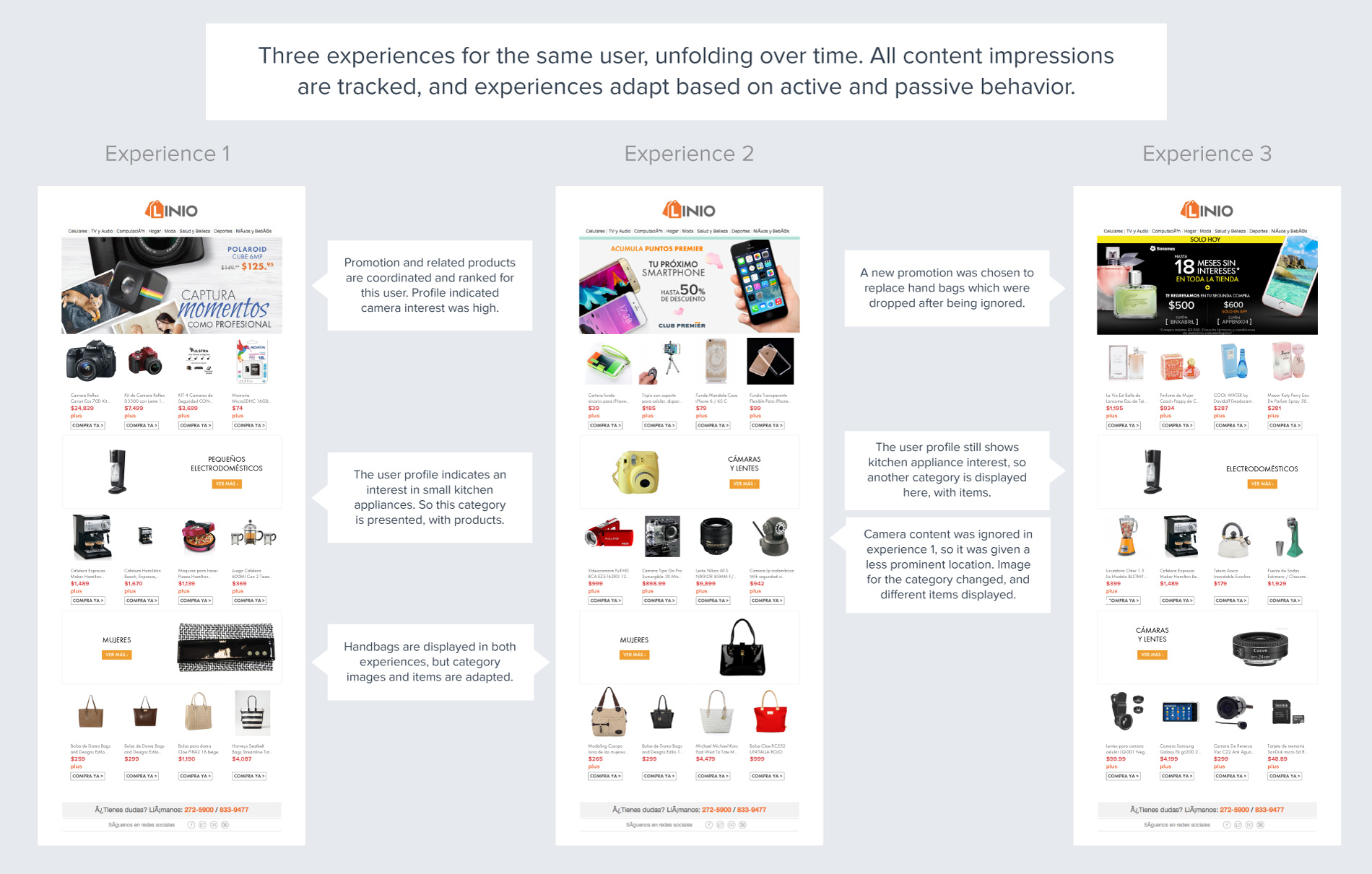Personalization is all the rage in marketing. Why? Because it pays. Personalized emails, videos, and other marketing content consistently produce high returns.
But personalization is hard. Marketers typically want to personalize when they have very little information on the prospective customer, which makes it difficult to achieve good results.
Today, Jetlore has announced its new Layout Generator, a tool that uses algorithms, data discovery, and transactional information to try to solve this problem. Layout Generator automates the selection, combination, and delivery of personalized email, web pages, and mobile app content.
Here’s how it works.
Connecting to your CRM or ecommerce platform, Jetlore ranks catalogs, product collections, marketing promotions, individual products, and editorial content. It then evaluates all your content types, allowing them to be blended into a single communication. For example, it could create a personalized email that includes the right items, categories, and suggested products for that individual consumer but also includes those that match a promotion or an editorial content piece.
In addition to delivering these personalized experiences via email — a strength for Jetlore since it started its life in email delivery — the output can be delivered via the Web and mobile apps. Once the delivery has been made, Jetlore monitors what the consumer does with that communication, learning what they did and didn’t connect with and adjusting future experiences accordingly. With every interaction, the system learns how to serve the customer better.
Jetlore has an email background, so it is no surprise that the solution focuses on this delivery mechanism first, with other channels available as additional distribution points. However, we know that email is still an important channel for marketers. With mobile (both apps and the mobile Web) as the fastest-growing channel in history, why focus so heavily on email for this solution?
“We focus on email and CRM as the starting place for a number of reasons,” Eldar Sadikov, founder and CEO at Jetlore told me. “The most important one is that email is the primary re-engagement channel with existing customers and has the highest return on investment.”
Email doesn’t just win from an ROI perspective, according to Sadikov.
“Email is the most frequent touch point a retailer has with existing customers,” Sadikov said. “Customers may not visit your retail site every single week, but they will certainly open at least one of your emails in any given week (if they’re fresh and relevant!). Powering content in emails allows Jetlore to survey customer interests much more frequently — as much as 20x more — than other channel.”
Email also solves one of marketing personalization’s most pressing issues. Marketers want to personalize content when the prospective customer is at the top of the funnel. That causes a disconnect, because the top of the funnel is where the prospect is mostly anonymous. Asking for an email address early, and then utilizing email as the starting point for future communications, helps solve the user identification conundrum.
“One of the fundamental requirements for ecommerce personalization is user recognition: The ability to recognize a user when she comes back to your site,” Sadikov said. “Email needs to be a foundational element of any personalized content orchestration solution because it allows for customers to be ‘fingerprinted’ (or ‘cookied’), which greatly improves recognition of customers when they show up in other channels.”
The Layout Generator itself is incredibly easy to use, operating in the exact click-and-drag way you’d want it to. Using the tool, a retail marketer coordinates and combines different content types in relation to each other. The output is a code snippet that can be used in email templates, on web pages, and in mobile environments.
Jetlore uses a variety of data to determine how to personalize the output. This includes transactional data, website browsing activity, and user-contributed data such as favorites, ratings, reviews, wish lists, and idea boards. In addition, it looks at what content was displayed to each user, how many times, when, and in what channel. It also takes into account third-party data, such as signals from social networks.
“Jetlore extracts attribute-level data from a customer’s ‘lifetime journey’ and tailors its data model for the uniqueness of every customer,” Sadikov said. “The data model understands the differences between ‘long-lived’ attributes like brand affinity and ‘short-lived’ attributes like product views, whose predictive value decays quickly with time.”
In addition to serving output that shows a predetermined set of contents, Jetlore can also personalize the email based on the time it is opened to ensure that the right offers, products, and customized offerings are available at the right time.
So that’s how it works, but is Jetlore delivering on the promise of personalized content — higher returns?
“Customers such as eBay, Linio, and Global Fashion Group are seeing CRM program revenue lifts up to 80 percent and total online revenue lifts of up to 15 percent,” Sadikov said. “More importantly, our customers see a significant uplift in user engagement and retention. Users stay longer and are engaged, and that ultimately translates to repeat purchases and higher customer lifetime value (LTV).”
Jetlore’s Layout Generator is available from today via its website.
VentureBeat's mission is to be a digital town square for technical decision-makers to gain knowledge about transformative enterprise technology and transact. Learn More


